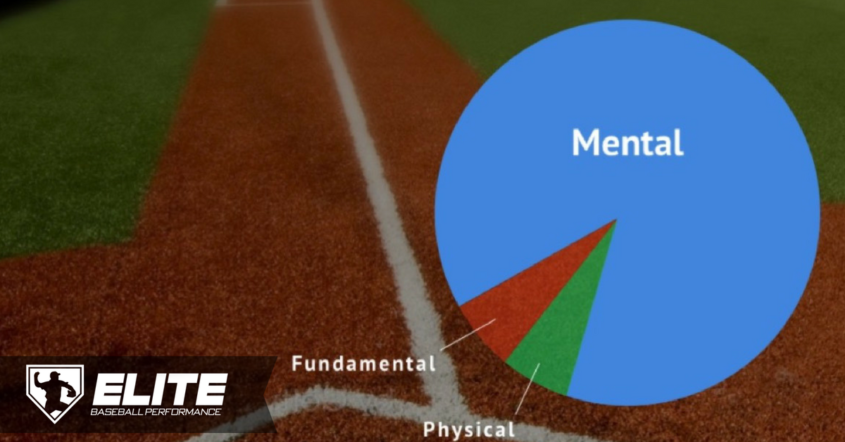How MLB Pitchers Use Mental Imagery to Enhance Their Performance
The following is an excerpt from Bob Tewksbury’s new book, “Ninety Percent Mental: An All-Star Player Turned Mental Skills Coach Reveals the Hidden Game of Baseball.” In this great new book, Tewks, a former Major League pitcher and mental skills coach for two of baseball’s legendary franchises (the Boston Red Sox and San Francisco Giants), Bob takes fans inside the psychology of baseball. Click here to learn more about the new book.
The mental game is extremely important for baseball players, and below, Tewks shares a great story of how MLB pitcher Jon Lester has used mental training to his benefit.
Ninety Percent Mental
Make no mistake; thoughts become things.
If a pitcher thinks, “don’t walk this guy” or “that pitch was a strike” and allows that thought to occupy his mind, the thought will lead to that reality. As a result, your focus will be not on the execution of the next pitch but on the emotion from the distracting thought.
This takes focus away from the task at hand and any pitch thrown without trust, confidence and conviction will not lead to a positive result.
Breathe.
That is where my book begins, and it is where my book will end.
Breathe.
A concept so simple a newborn grasps it as soon as he greets the world. An act that eventually becomes so difficult an old man on his deathbed can no longer accomplish it.
In between, breath sustains life. And if you can master the art of controlling it, it can reduce blood pressure, improve sleep, maintain health, sharpen focus, improve job performance and, yes, in so many of our lives, cause stress to melt clear away like March ice on Opening Day.
Breathe. It is where we were midsummer in 2013, and Jon Lester had had it.
Around him, the Oakland Coliseum, a rapidly deteriorating ballpark that he detested, had never looked so untamable. Behind him, the first half of an inconsistently choppy season continued to clutter his mind. Ahead of him, the second half of a season that refused to produce answers appeared just as ominous.
At this point in its cracked-concrete life, the Coliseum was becoming notorious for sewage backups. Seriously. The major leagues? A plumbing system that may as well have been constructed during the California Gold Rush periodically caused toilets to back up, water to leak into both clubhouses and dugouts, and a resulting stench that could singe the hairs in your nostrils.
Breathe? Hold that thought. The Oakland Coliseum maybe isn’t the best place in the major leagues to preach this concept. Yet there I was, in my role as a mental skills coach for the Boston Red Sox, late afternoon, sitting in the dugout anyway.
The periodic sewage, the stench, the antiquated clubhouses, none of that, by the way, is why Jon Lester disliked the place. What so many outside the game don’t always understand is that every single road trip is foreign. Every field has a different look, a different view, a different background. Comfort breeds confidence, and nothing this side of health is more vital to a professional athlete than confidence.
Always, it seemed, for whatever reason, Lester was uncomfortable on the mound in the Oakland Coliseum. Every time he started a game there, the whole place just looked different.
“I don’t know what it is,” he says. “There are stadiums you get to and it never looks good. You always feel isolated. Detroit’s one of those for me. You get on that mound and nothing looks right. It just doesn’t fit you, for whatever reason. Toronto was the complete opposite. I love Toronto. I thought their mound was one of the best mounds in baseball. The way the backdrop is, it makes you feel like home plate is right there.
“Oakland was one of those places I never felt good in. I think it’s because of the [massive] foul ground. Home plate, it looks like you’re throwing to the batting cage over there. I’ve never really had good games there. So you have these different things that go through your mind when you get in these different places.”
In the previous season, Lester had limited the Athletics to just one run and four hits over 6.2 innings, striking out nine and walking just one. But the Red Sox lost 3-2. Never had a good game in Oakland? As my old manager in Minnesota, Tom Kelly, often said, “The mind is a very dangerous thing.”
On this day, there was a lot on Lester’s mind, and too much of it was diminishing returns. At 8-5 with a 4.60 ERA, 2013 in so many ways was a continuation of 2012, statistically the worst of his career: 9-14 with a career-worst 4.82 ERA. For the man who worked five and two-thirds incredibly impressive shutout innings as a rookie in Game 4 of the 2007 World Series at Colorado’s hitter-friendly Coors Field, this was foreign land, uncharted territory, a rock and a hard place he never would have imagined. Too many negatives were living rent free inside his head.
At twenty-nine and with the All-Star break waiting on the other side of the weekend, Lester was set to make his final start of the first half on Saturday night. At this point, he was certain of only one thing. What he was not going to do was step into the break without exhausting his search for solutions.
As David Ortiz, Dustin Pedroia, Jacoby Ellsbury and the rest of the Red Sox swung away in batting practice on this Friday afternoon, Lester looked into the dugout and spotted a potential life vest. He and I had first met in 2002, when Lester was eighteen, shortly after the Red Sox scooped him up in the second round of the draft. As part of my work with the Red Sox, I made it a point to meet as many minor-leaguers as I could as they entered Boston’s system. Just as the ball is held together with those red stitches, so, too, are the relationships in this game. They can never be tight enough.
Preparation never was a weakness for Lester. Few worked as hard as he did. But there was one area I felt could help improve his performance. I told him how I used mental imagery throughout my career. You’ve heard the expression “mental imagery”? The body doesn’t know the difference between a real or an imagined event and, therefore, the body will go where the mind takes it. During the tough times, mental imagery exercises I had developed helped me battle the fear of failure and insecurity that, always, are an athlete’s toughest opponent. During the good times, the mental imagery reinforced the foundation upon which I operated.
The short answer was that, no, Lester had never tried imagery before any of his starts. He had flirted with the idea of it just once, long ago, and he didn’t like it for a very interesting reason.
Lester was never much of a reader because his admittedly short attention span just won’t allow it, but he nevertheless devoured the legendary Harvey Dorfman’s The Mental ABC’s of Pitching: A Handbook for Performance Enhancement when he was in high school. He read it in three days, matter of fact. It was during his senior year, and he had decided to not play basketball that winter in order to focus on baseball, and he read the book about a week before his first start.
Looking for a way to focus amid the swirl of professional scouts and college recruiters who were creating chaos in his life at the time, Lester inhaled the book and immediately went out and threw a no-hitter in that first start, punching out nineteen hitters. He came within one out of a perfect game.
And that is why, more than a decade later, he still shied away from imagery. Because, as he told me, he just knew he could not replicate the success of that no-hitter with nineteen strikeouts.
“It just so happened that it was one of those days that just kind of fell in line with what I was doing and I was like, ‘I can’t get back to that place. If I try to do imagery again, it won’t replicate the outcome,’” Jon says.
“That’s the first thing you think of when you do it. You think of the last time you did it and what happened.”
I shared my personal experiences of having used imagery for most of my career, and how powerful a mental tool it had been for me. He seemed intrigued. I asked if he would be willing to try a guided imagery exercise with me to give him a feel for what I was talking about. It was the right moment. At this point, Lester was open to anything that might help him.
We walked up the long tunnel leading from the dugout back into the visitors’ clubhouse and disappeared into a small office. He sank into a leather couch. He slouched down, getting comfortable, his head leaned back against the top of the couch. In full Red Sox uniform, he tugged his baseball cap forward, tilted to shield his eyes from the room’s harsh fluorescent light.
“Okay, now that you are comfortable, I want you to close your eyes and focus on your breathing,” I told him.
I spoke slowly, softly. “Inhale through your nose… feel the air as it slowly passes down through the back of your throat and into your lungs… feel your chest rise and expand… now hold it… now exhale slowly and fully through your mouth.”
We repeated that sequence three times. As we did, I noticed Jon gradually sink deeper into the couch. His jaw loosened. His mouth opened slightly. His leg twitched. I paused, surprised he had become so relaxed so quickly.
“You are now relaxed and ready for your imagery practice,” I said.
Following a few seconds of silence, I continued. “Now, imagine yourself on the pitcher’s mound tomorrow night. Feel your spikes as they rest firmly on the pitching rubber. Feel the seams of the baseball as you grip the ball in your glove, which you hold up directly in front of you.”
I led him through game situations. Through facing two batters while pitching from the windup. One batter while pitching from the stretch. I worked to create pictures in his mind, each associated with a particular pitch. Fastballs down and away for called strikes. Changeups cloaked in the illusion of fastballs, creating swings and misses. Slow curveballs floating in for strikes, the hitters helplessly watching them go by. Deadly cutters that made those hitters look foolish.
I went through each batter he would see in Oakland’s lineup the next night. I detailed various situations he might face and how he would successfully respond to them. Someone commits an error, this is how you react to it.
This imagery exercise went on for about eight minutes, and then I instructed Jon to open his eyes and reorient himself to the room. When he nudged his cap up off of his face, he looked like he had been sleeping. Wow, I thought. He really got into this.
“What did you think?” I asked. He said he liked it but that at times my dialogue went a little too fast. Because of that, at times, he said, he struggled to fully create images in his mind. This was good feedback for next time. Most important, there would be a next time. He was buying in.
We agreed to implement this brief imagery practice into his pregame routine the next night. The best time, we decided, would be after his pitcher’s meeting, around five o’clock. Before each start, the starting pitcher, catcher and pitching coach meet to go over that night’s opposing lineup and implement a game plan. Right after that, Lester would go to the trainer’s room, lie on the table, cover his eyes and re-create, as best he could, what we had just done.
On the field that Saturday night, Lester felt more comfortable than he had all season. He threw a called third strike by Coco Crisp to start the bottom of a 1-2-3 first inning. Induced a ground-ball double play in the second from Nate Freiman and wound up stranding two Athletics and holding them off the scoreboard. Derek Norris touched him for a solo homer in the fifth, and then Oakland scratched two more runs off of him in the sixth.
But on this night, the internal results following his session the night before became the most important element.
“It was almost like I had already pitched,” Lester says. “I felt more relaxed and prepared. We lost 3-0, but I pitched a lot better. I felt more in command with what was going on in the game, with situations that arose during the game.”
We talked again the next day about implementing imagery and visualization permanently into his pregame routine. We decided that I would record a guided imagery program for him to use prior to his starts during the season’s second half. We discussed the content and timing of the script that day, and I made the recording during the All-Star break.
Over thirteen starts during the second half of the season, Lester would go 7-2 with a 2.57 ERA. Best of all, that run would stretch deep into October, where a quiet room in Fenway Park and an imagery program on Lester’s iPod would combine to become as beautiful in Boston as the autumn orange- and red-tinged trees along the Charles River…
BREATHE.
Get Bob Tewksbury’s Book Ninety Percent Mental
Bob Tewksbury is the mental skills coach for the San Francisco Giants and was formerly the mental skills coach for the Boston Red Sox. He has a master’s degree in sport psychology and counseling from Boston University. Drafted by the Yankees in 1981, he won 110 games over a 13-year career (from 1986 through 1998) with the New York Yankees, Chicago Cubs, St. Louis Cardinals, Texas Rangers, San Diego Padres, and Minnesota Twins, and was named to the National League All-Star team. He lives in Concord, New Hampshire.











Trackbacks & Pingbacks
[…] claim much of their success to consistent visualization practices. Jon Lester has been using an imagery routine before each of his starts since 2013. Hall of Fame Red Sox player Carl Yastrzemski would visualize […]
Leave a Reply
Want to join the discussion?Feel free to contribute!